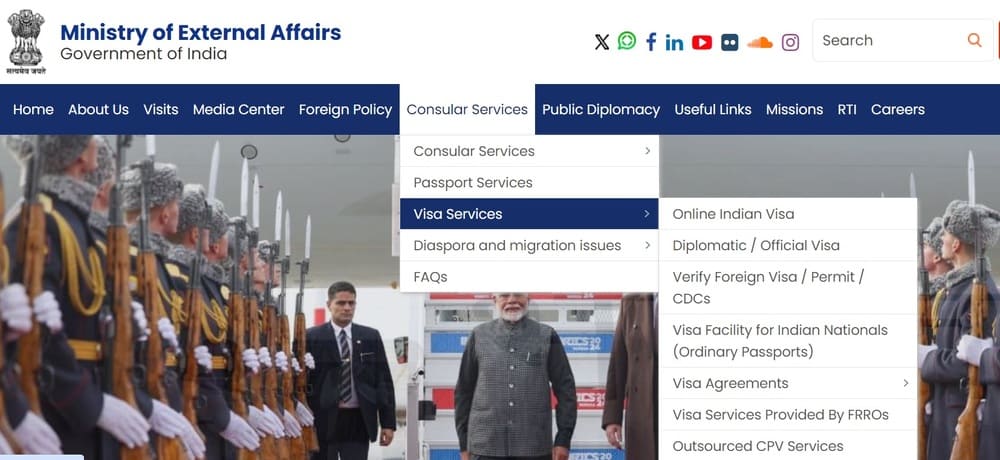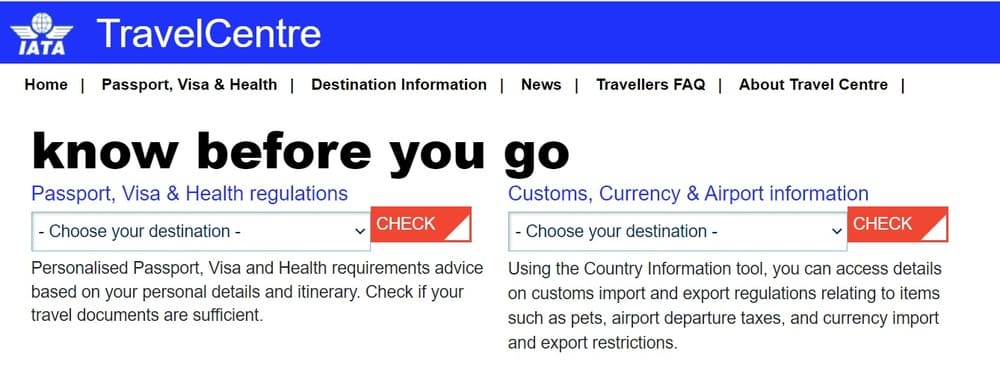How To Quickly Check If You Need a Visa
This post may contain affiliate links. If you make a purchase using one of these links, I may receive a small reward at no extra cost to you. See my Disclosure Policy for more information.
Open any Facebook travel group and you will see way too many visa-related questions. While some genuinely seek first-person experiences about niche problems, most are so basic one wonders why they haven’t checked official sources instead.
Don’t be that guy. You can’t arrive at Immigration and claim that a random dude on the internet said you didn’t need a visa when it turns out you indeed do.
Am I a random dude on the internet? Perhaps. But my advice on checking if you need a visa is evergreen and used by most airlines worldwide.
Do your due diligence! I am just helping you do that.
1. Check the Country’s Foreign Ministry website
You should check with the foreign ministry of the country you are traveling to, not yours.
For example, say you’re planning a trip to India, then check with the Ministry of External Affairs of India.
There, you will surely find something about visas or consular services. This is the ultimate resource.

The process can sometimes be confusing and you may have to navigate user-unfriendly websites and ambiguous information.
2. Email the Country’s Embassy
I rarely do this because I don’t like to wait for the embassy to email me an answer.
Some embassies never answer!
But if you have a rather niche situation or a question whose answer is not on the website, then a trip to the embassy in person or an email is the first step to figuring it out.
3. Timatic (IATA Travel Center)
You go to the airline check-in desk and they somehow, almost miraculously, know if you need a visa and what other requirements are in place for your case. How? Do they check with the foreign ministries manually for each passenger?
Enter Timatic.
Timatic is an information accumulation service using over 1000 official sources worldwide. Basically, Timatic checks the requirements, creates a database, and then airlines use that.
It’s up-to-date, it’s comprehensive, it’s trustworthy, and best of all, you can use it for free too!
Simply go to the IATA Travel Center website, enter your travel details and you will be shown all the requirements (visa, onward tickets, health insurance, vaccination, etc) that apply to you.

It asks for a fair bit of information which is fair as rules can be very strict and contingent on multiple factors.
A simplified option, and the one I use all the time for quick checks, is the Emirates Entry Requirements service which, of course, draws information from Timatic.

You don’t need to fly with Emirates to use it and you can check the requirements for any combination of passport, residency, and destination.
Since it takes the information directly from Timatic, it’s every bit as trustworthy.
4. Wikipedia (but double-check)
Every country has a Wikipedia page about its visa policy. There, you can get a quick idea about which countries can travel visa-free and which need prior authorization.
For example, check out this article about Thailand’s visa policy.

Since Wikipedia is community-driven, the information there is usually up-to-date and reliable. But not always!
For instance, in late May 2024, Thailand announced that it would extend its visa-free policy to more countries and increase the duration from 30 to 60 days. The announcement never said when it will come into force.
This didn’t stop editors from quickly adding this new information to Wikipedia. The article had incorrect advice for over a month!
Long story short, use Wikipedia with a giant pinch of salt and always check with more official sources like the country’s foreign ministry or Timatic.


